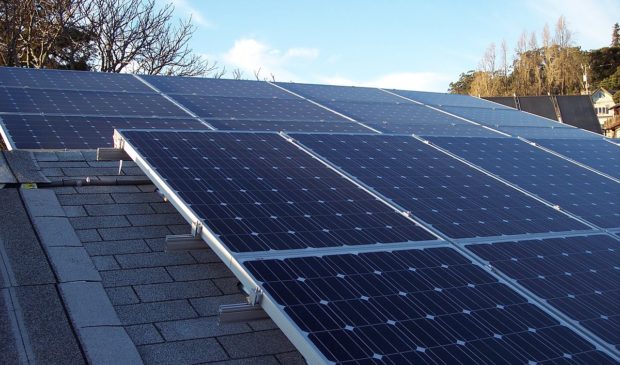Austin Energy makes good on energy efficiency goals
Tuesday, January 31, 2017 by
Jack Craver Austin Energy officials say the city-owned utility is making good on a lot of the ambitious energy efficiency goals set out for it in the Resource, Generation and Climate Protection Plan approved by City Council in December 2014.
Thirty-one percent of the energy Austinites consume now comes from renewable sources, up from 25 percent when the plan was approved. The goal is for renewables to account for 55 percent by 2025.
The good news is that the march toward renewables should only get easier as solar technology gets cheaper, explained utility officials Monday during a meeting of the Austin Energy Utility Oversight Committee, which every member of Council sits on. The “total levelized cost” of solar energy – which takes into account the total lifetime costs and output of a solar source – has dropped by 50 percent over the past five years.
The plan calls for AE to produce 950 megawatts of solar power by 2025, with 110 MW coming from local rooftop panels. So far, 74 MW of local solar power is being produced and the utility is getting another 157.5 MW from the Roserock Plant in West Texas. The utility has also signed contracts for another 450 MW in the near future and plans to issue a request for proposal for another 150 MW to be produced by the end of 2019.
“The cost will continue to go downwards,” said Khalil Shalabi, AE vice president of energy market operations and resource planning, during a presentation on the utility’s ongoing efforts to update the generation plan.
In addition, explained Shalabi, the city’s demand management initiatives have had a significant effect on electricity consumption. Last year, for instance, the utility granted roughly 1,000 applications from homeowners and businesses to install rooftop solar panels, the highest ever. The result of that initiative, said Shalabi, along with a city code that requires new construction to be more energy-efficient and AE programs aimed at encouraging energy efficiency, is that the city’s electricity consumption is not growing as quickly as that of the rest of the state.
The utility is also optimistic about the affordability goals set forth by the 2014 plan, which called on AE to not raise rates on customers more than 2 percent per year and for its rates to be in the lower half of Texas utilities.
Residential customers in Austin have the second-lowest average residential bills in Texas, AE spokesman Robert Cullick said in an interview with the Austin Monitor. While the rates that commercial customers pay are slightly higher than the state average, he said, the utility is confident that the rate reduction that Council approved last year will bring Austin’s commercial rates in line with the median.
While the utility remains focused on meeting the goals set in 2014, it is also dealing with an update to the plan that could set entirely new goals. Members of the Electric Utility Commission and the Resource Management Commission, along with consumer activists, environmental advocates and business representatives, have formed a group that is developing proposals for ways to change the plan.
Karen Hadden, chair of the Electric Utility Commission, said she hopes the group can “enhance” the plan’s energy efficiency component and “still keep things affordable.”
The group, she said, is waiting on the utility to produce models based on 22 different scenarios that involve a variety of different goals.
Council Member Ellen Troxclair asked Shalabi whether the utility could test out a scenario that is driven exclusively by cost, rather than the desired source of energy. Shalabi said that that was a tall order: “I may have a hunch as to what can keep us affordable, but I don’t know.”
Kaiba White, a policy analyst for Public Citizen, lauded AE for its “good work” and urged Council members to continue pushing for bold sustainability goals, arguing that the utility’s role as a leader in energy innovation will be even more important now that climate change skeptics are running the show in Washington, D.C.
“It’s not all about how this impacts just Austin,” White said. “We are part of a bigger movement here.”
This story has been corrected. We originally reported that Austin Energy is currently in the process of negotiating contracts for another 450 MW in the near future, but those contracts have already been signed. In addition, Austin has the second-lowest average residential bills in Texas, not the second-lowest rates.
The Austin Monitor’s work is made possible by donations from the community. Though our reporting covers donors from time to time, we are careful to keep business and editorial efforts separate while maintaining transparency. A complete list of donors is available here, and our code of ethics is explained here.
You're a community leader
And we’re honored you look to us for serious, in-depth news. You know a strong community needs local and dedicated watchdog reporting. We’re here for you and that won’t change. Now will you take the powerful next step and support our nonprofit news organization?











